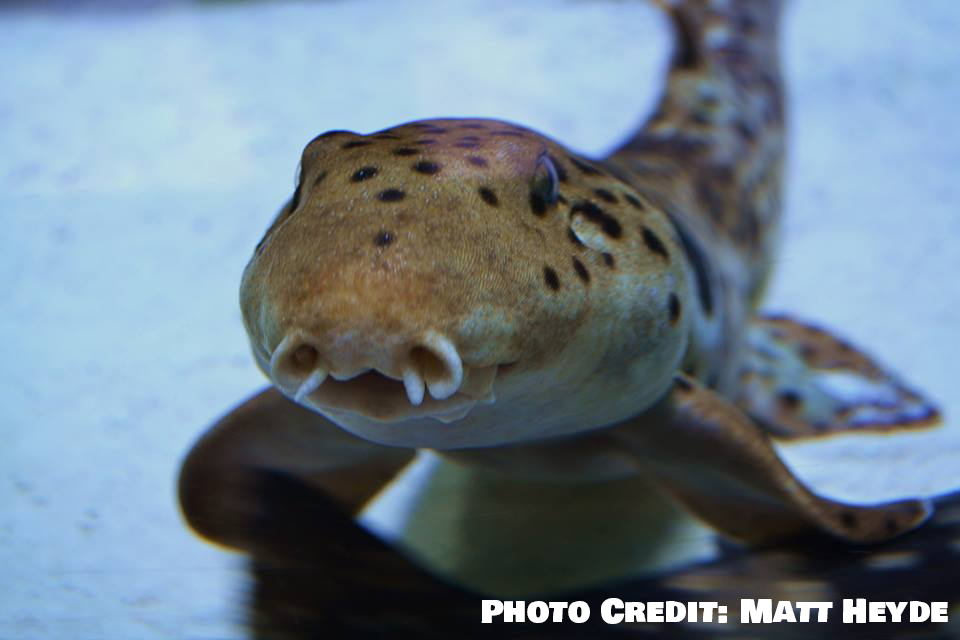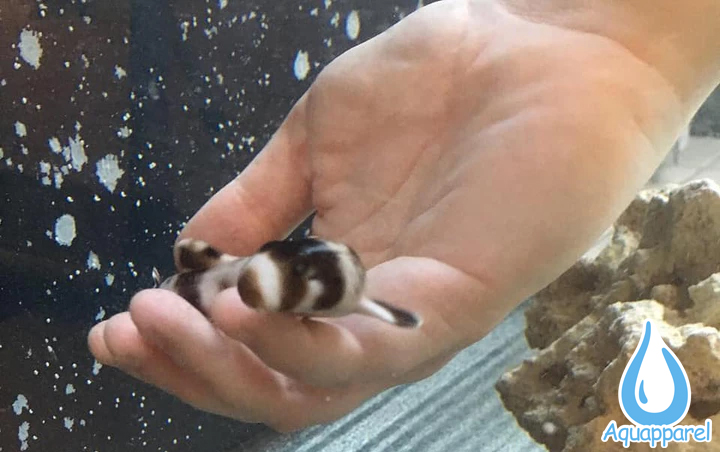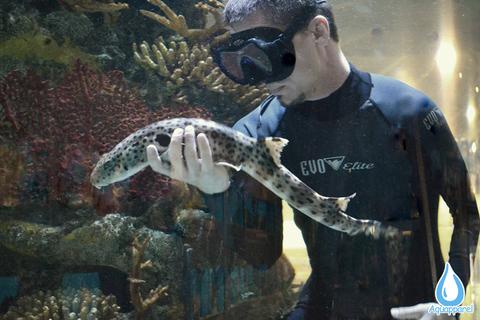This is a Walking Shark. It’s also called the Epaulette Shark.

Both of the sharks in this blog post were rescued. There are ~440 known species of sharks. Of those 440 only about 20 or so need to swim in order to breathe. The rest, like the walking shark are buccal pumpers.

The Walking Shark belongs to a group of fish called the Elasmobranchii fish. Most of the species that are available in the aquarium trade come from this family. Here are some interesting facts about the Walking Shark:
- They are found in shallow, tropical waters off Australia and New Guinea
- The common name of this shark comes from the very large, white-margined black spot behind each pectoral fin, which are reminiscent of military epaulettes
- It is referred to the Walking Shark because it actually walks along the sea bed on it’s pectoral fins
- In the wild, they frequent shallow reefs and tide pools where they hunt for food
- Due to their habit of hunting in shallow waters, they have developed the ability to cope with the severe night time oxygen depletion also known as hypoxia. Hypoxia is the ability to increase the blood supply to the animal’s brain and selectively shut down non-essential neural functions
- This ability developed due to the low oxygen levels of in the tidepools that it hunts in. It also sometimes will walk out of the water to catch prey and then walk back in
- It is capable of surviving without oxygen from the water for an hour without ill effects
- They can also withstand much higher temperatures than most animals with hypoxia
- The Walking Shark is is oviparous which means that the females develop eggs within their bodies and then deposit them so that they can hatch
- They do this just about every 14 days from August to December
- It takes approximately 130 days for the shark pup to fully develop and hatch
From my experience these sharks are very docile and intelligent.

Their current status in the wild according to the IUCN Red list as of February of 2015 is listed as of least concern. These sharks are commonly bred in captivity so if there ever is an issue, we will have the ability repopulate them in the wild if need be.
Let me know in the comments below which public aquariums have this species on display so that if anyone who is watching this wants to see one in person they can.
Also, if you want to watch a really awesome video of one of these sharks hunting on land. Check out the video below that PBS did a while back as part of their Nature’s Miniature Miracles series.
This shark is commonly kept as a pet. But before you buy one for your home aquarium watch the video below.
If you would like to learn even more, consider enrolling in my online course here: Aquarium Sharks For Beginners
